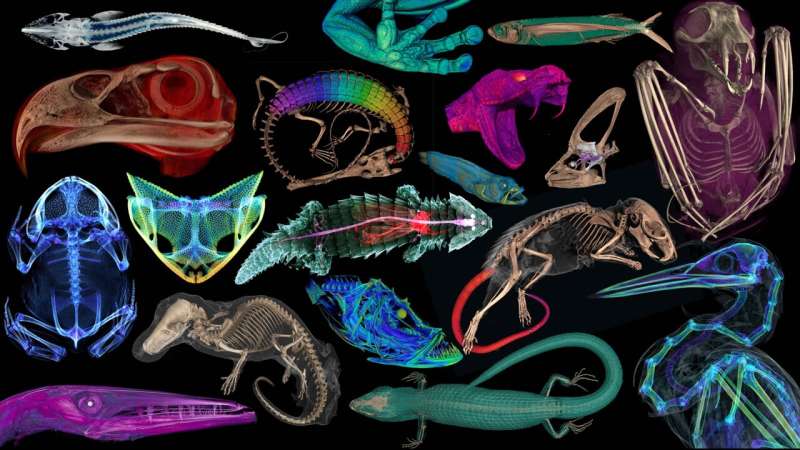In a monumental leap forward for scientific accessibility and discovery, natural history museums have ushered in a new era with the completion of the open Vertebrate project. Over the course of five years, this collaborative endeavor among 18 institutions has focused on creating 3D reconstructions of vertebrate specimens and making them freely accessible online.
Published in the journal BioScience, researchers have provided a comprehensive summary of the project, shedding light on the specimens scanned to date and the potential implications of this groundbreaking initiative.
Dr. Edward Stanley, co-principal investigator of the oVert project, emphasized the transformative nature of this endeavor, stating, “When people first collected these specimens, they had no idea what the future would hold for them.” Indeed, from their humble beginnings as cabinets of curiosity in the 16th century, natural history museums have evolved into invaluable resources for scientific inquiry and public education.
However, despite the public-facing nature of museums today, the majority of their collections have remained largely inaccessible to the general public. With exhibits showcasing only a fraction of the specimens held behind closed doors, accessibility has been limited primarily to scientists who must physically visit or request specimens on loan.
The oVert project seeks to democratize access to these invaluable resources by digitizing specimens and making them available online. Through the use of computed tomography (CT) scanning, researchers have captured detailed 3D models of over 13,000 vertebrate specimens, representing a diverse array of species across the animal kingdom.
CT scanning allows researchers to peer beyond the external morphology of specimens and examine their intricate internal structures, including bones, muscles, and organs. This non-destructive imaging technique provides unprecedented insights into the anatomy of these specimens, revolutionizing the way scientists study and interact with museum collections.
Moreover, by digitizing specimens and making them freely available online, the oVert project has paved the way for remote access and collaboration among scientists, educators, students, and artists worldwide. This democratization of knowledge has the potential to catalyze new discoveries and inspire innovative approaches to scientific inquiry.
From uncovering unexpected anatomical features in spiny mice to documenting the intricate skeletal structures of humpback whales, the oVert project has already yielded remarkable insights into the natural world. As scientists continue to explore and analyze the wealth of data provided by this initiative, the possibilities for future discoveries are endless.
The completion of the openVertebrate project marks a significant milestone in the history of natural history museums, ushering in a new era of scientific accessibility and discovery. By harnessing the power of digital technology, researchers have unlocked the doors of museum collections, inviting the world to explore and learn from the wonders of the natural world.
